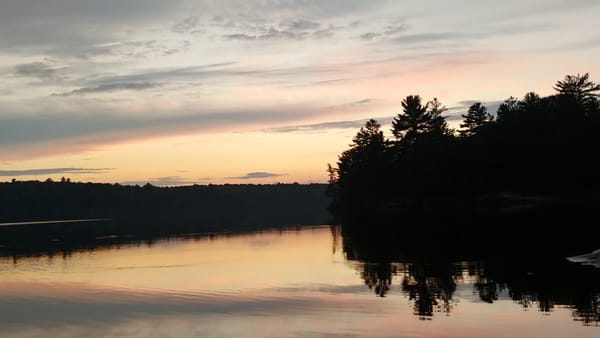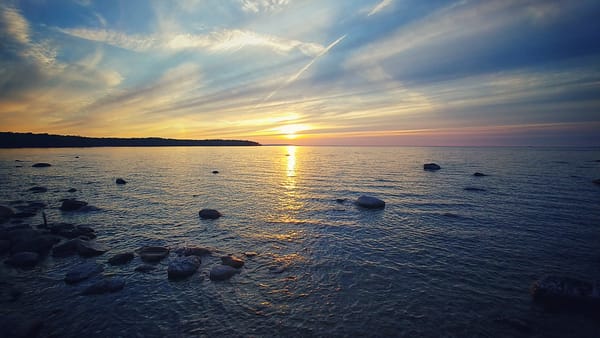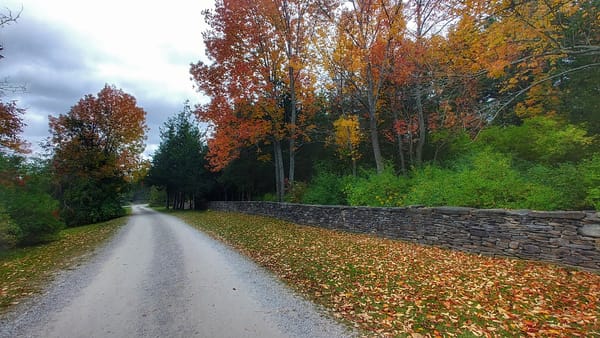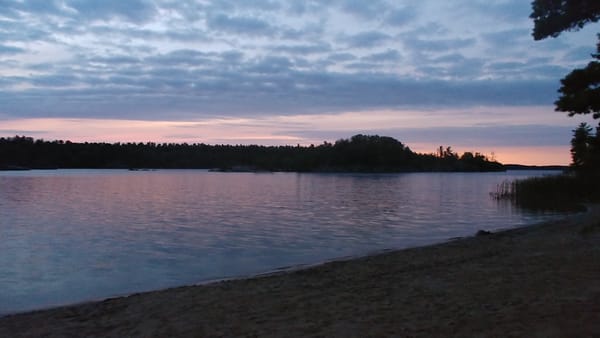How to Spot the Northern Lights!

On the cusp of the end of October 10 and the early morning hours of October 11, 2024, we finally caught the Aurora - a magical wave of shimmering, flowing, electrically charged particles circling and dancing above us in the night sky. Every direction we turned - north, certainly, but also to the east, west, south, it flowed, following a rhythm we could not hear, but could inexplicably feel, as though we were shimmering along with it despite being rooted to the ground. Illuminated against this dynamic backdrop was Jupiter, shining bright in the sky like a sentinel, and the Seven Sisters, a star cluster known as Pleiades.
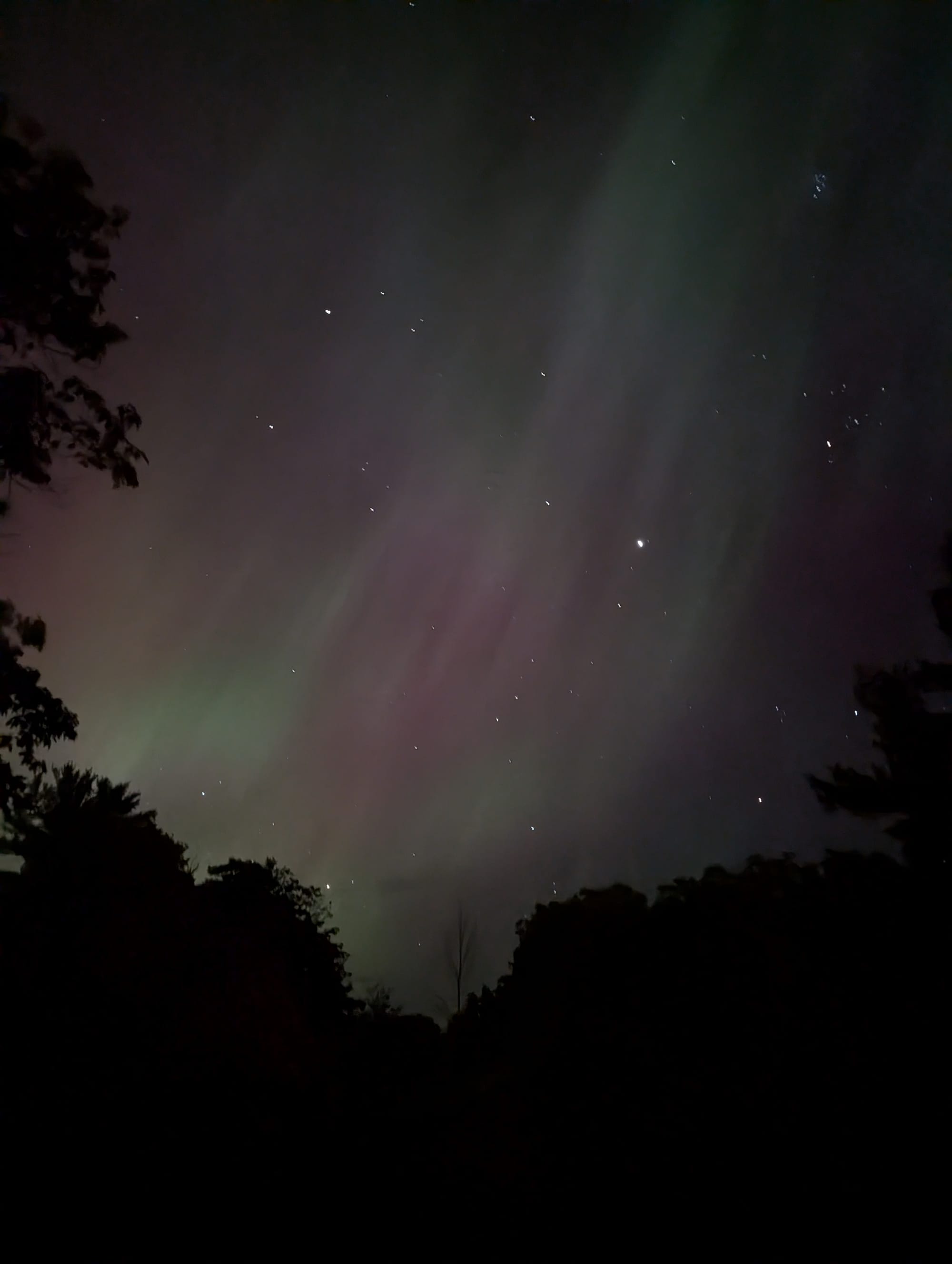
That fruitful night bookended three times that we had tried, driving up north from our urban base in Toronto, that week. The first of them, Saturday the 5th, media was alight with articles of "How to catch the Northern Lights this weekend!" - we were ready, but as 11PM rolled around, we knew it was a bust. Then, Monday, we tried again - this time had to be the one. We drove two hours north, certain we were seeing it, and laughing uproariously as we realized that we were actually seeing city lights reflected on an increasingly cloudy sky. The rain pattering onto the windshield cemented another failed attempt.
But in between these attempts, I was learning, researching, trying to understand how to avoid another such attempt. Following the media blindly was clearly not a winning strategy. Here's what I've learned:
Your Aurora Spotting Starter Pack
- A recent active geomagnetic storm - some sites you can check include: EarthSky, or the SpaceWeatherLive community (I have been a frequent lurker on the forums where I've learned much of what I now know about Aurora spotting)
- A Car - ideal unless you already live in a location without much light pollution. Step outside once the sun has set and the sky is dark.
- A smartphone camera with night mode (or a regular camera)
- The 'My Aurora Forecast & Alerts" App
- Optional: the 'Light Pollution Map' App
- Optional: the 'Astrospheric' App (or another to show you the cloud cover at your location - unfortunately, the app was not very accurate on the cloudy night we went out - either that or I wasn't reading it properly
- Optional: the 'Stellarium' app that will give you the names of the stars you're seeing in the sky
Okay, got your phone and the minimum apps installed? You're ready!
The Data
This is a very cursory but useful survey of the data that you should track in order to confirm whether an Aurora will be visible and where:
- The NOAA Forecast. Start with the Aurora Dashboard. This will give you a daily prediction of the forecasted viewing zone for the Aurora that day. But remember that this is only an estimate and not an accurate reading -Lady Aurora is fickle and predictions can really only be made maybe 30 minutes prior to its appearance.
- Check the NOAA 30-minute Aurora Forecast. This will provide a more accurate picture of what's happening closer to the time its happening.
- Check the KP index aka the Planetary K-Index. Both the NOAA dashboard as well as the My Aurora Forecast & Alerts app will provide the KP-index for that day. This is a measure of the magnitude or strength of the geomagnetic storm approaching Earth. A magnitude of 9 is the highest possible. As the NOAA dashboard sees, a K-index of 9 will allow the Aurora to be seen as far south as mid-USA in North America. Typically, a K-Index of 6 or higher tends to be fruitful in terms of Aurora viewing however,
- You also need to check the Bz value. The Bz value measures the direction of the interplanetary magnetic field. Typically the more negative the Bz value is the better it is for Aurora viewing. Essentially, the negative Bz allows magnetic charged particles to impact northern latitudes (think of a magnet - same charge will repel, while opposing charges will attract). This idea is equivalent to the Bz value. On Oct 11, I was following the Bz value - at one point around 9:30PM EST, it went as low as -50! When we left to drive up north, it hovered around -28 and stayed there for about 4 hours, the entire time we were out. This led to an exciting show that was visible even through Toronto's city lights, and allowed the lights to seem to be overheard at a relatively low latitude (north of Barrie, 44.3894° N, 79.6903° W). Meanwhile, on Monday, the Bz value was only about -10.
- Alternatively, the Bt value will be the mirror image of the Bz value - though less important for us laymen viewers, it is the strength of the interplanetary magnetic field.
Capturing the Northern Lights with your Smartphone
You've probably heard this before, but seeing the Lights with your naked eyes is one thing; capturing those colourful images is quite another.
In order to capture the Lights, you need to have your phone camera on the night mode option. Night Mode increases the photo exposure time and allows you to take pictures at night. Additionally, you can turn on the 'Far' setting in order to maximize the views you capture, especially of stars or the Lights.
What you see is usually less vibrant, at least in terms of the colours, than what you can capture on your camera. By no means, however, should this detract you from trying to see the lights. Even though they look different to the naked eye, the physical experience is no less magical... In fact, I would argue it is more so, because it's an experience no camera image can properly capture. Take it from me. I woke up the next morning with a smile on my face, despite getting home at 3AM on a weeknight, and being up for a 9AM meeting!
Experts say that we are at Solar Maximum, with a peak of sunspots covering the sun's surface - these are the areas that belch out charged gases that, if we are lucky, allow some of us on Earth to experience something magical.
Wishing you wonderful Aurora spotting adventures - now go forth and have fun!
